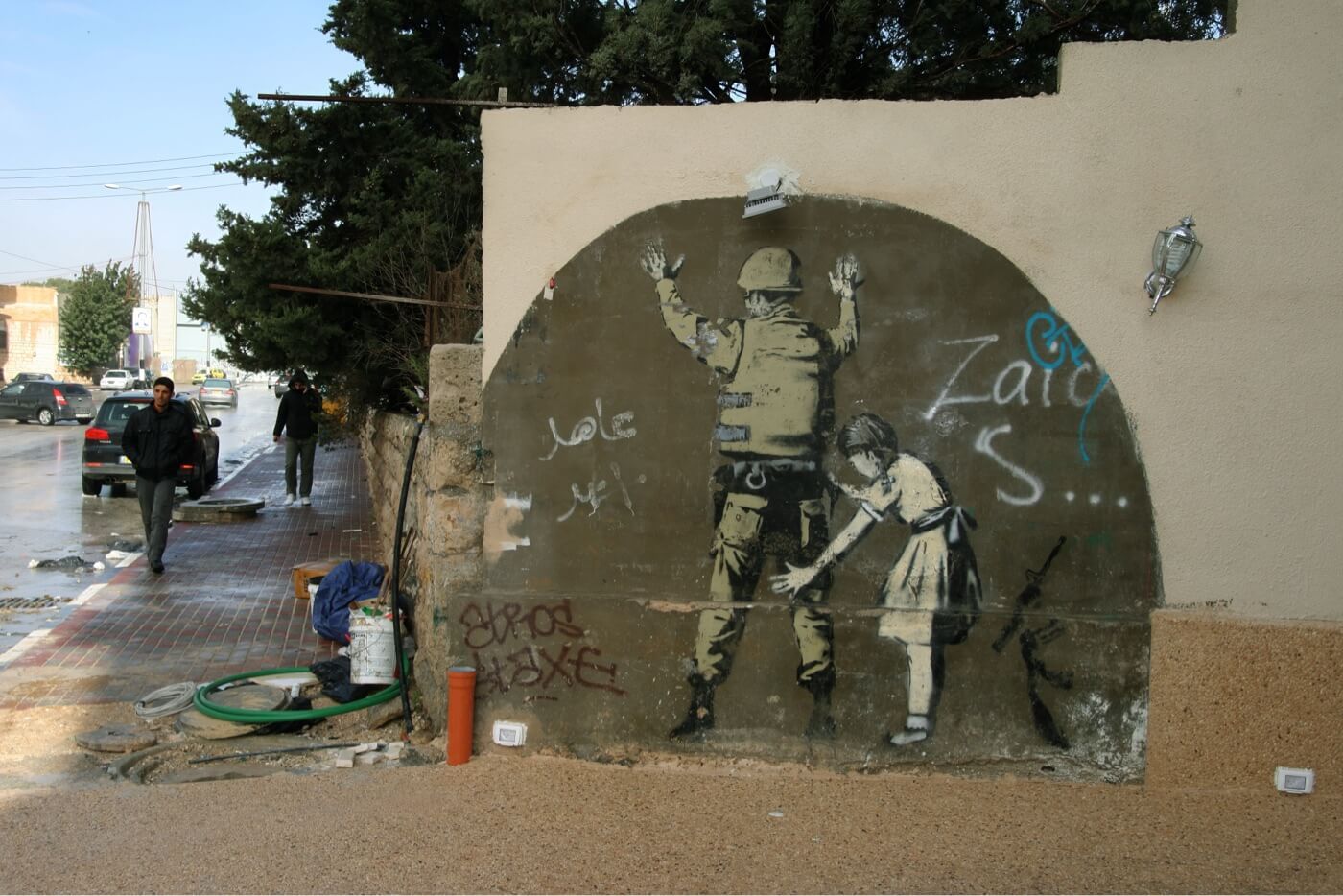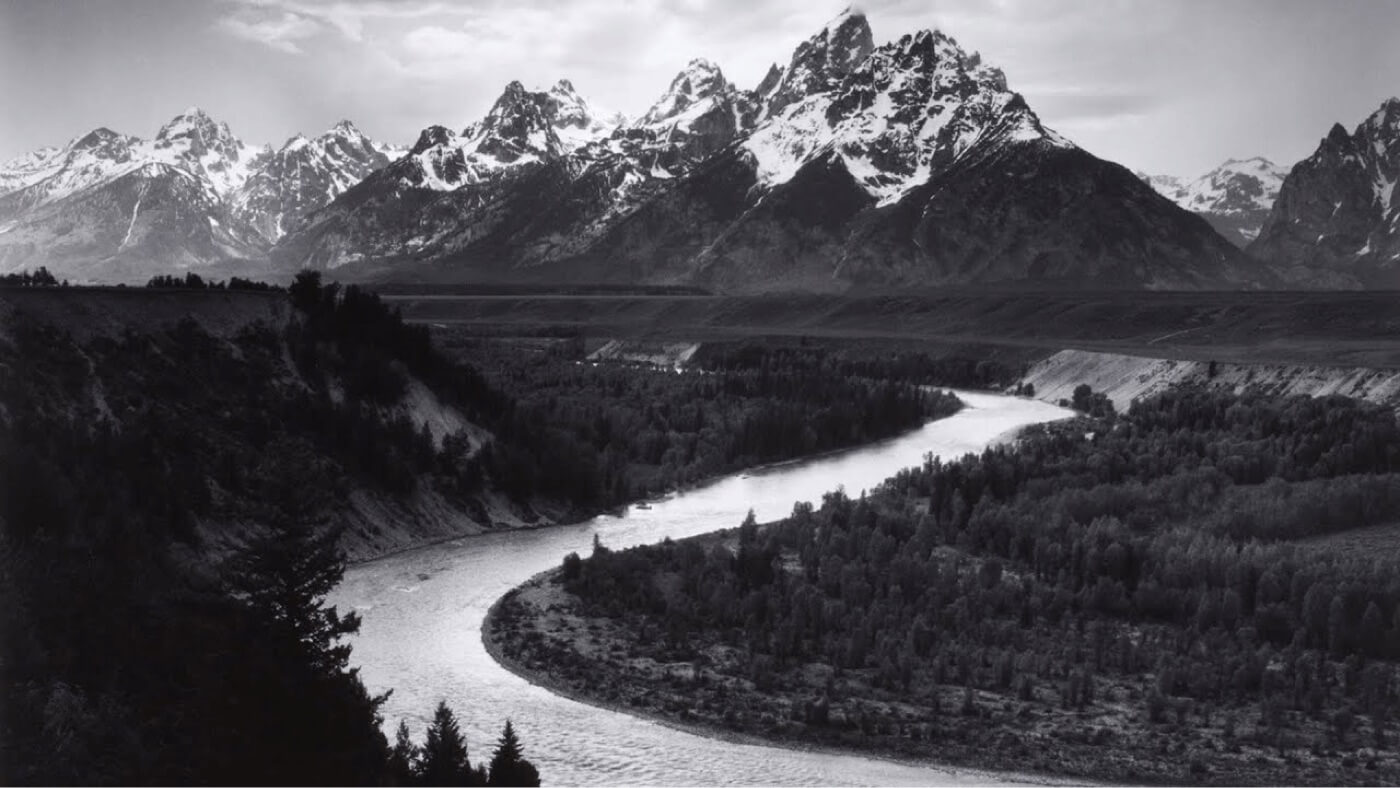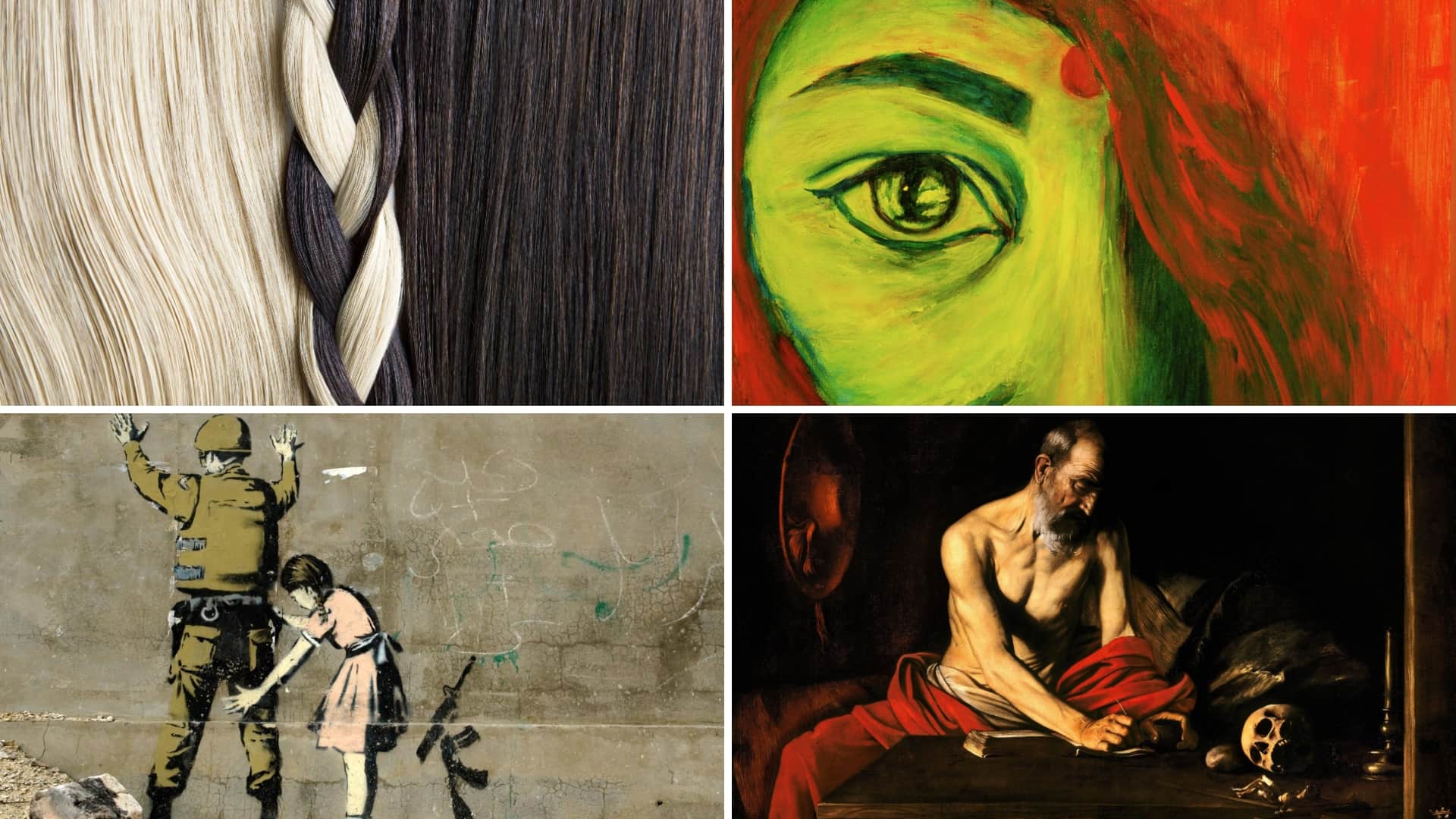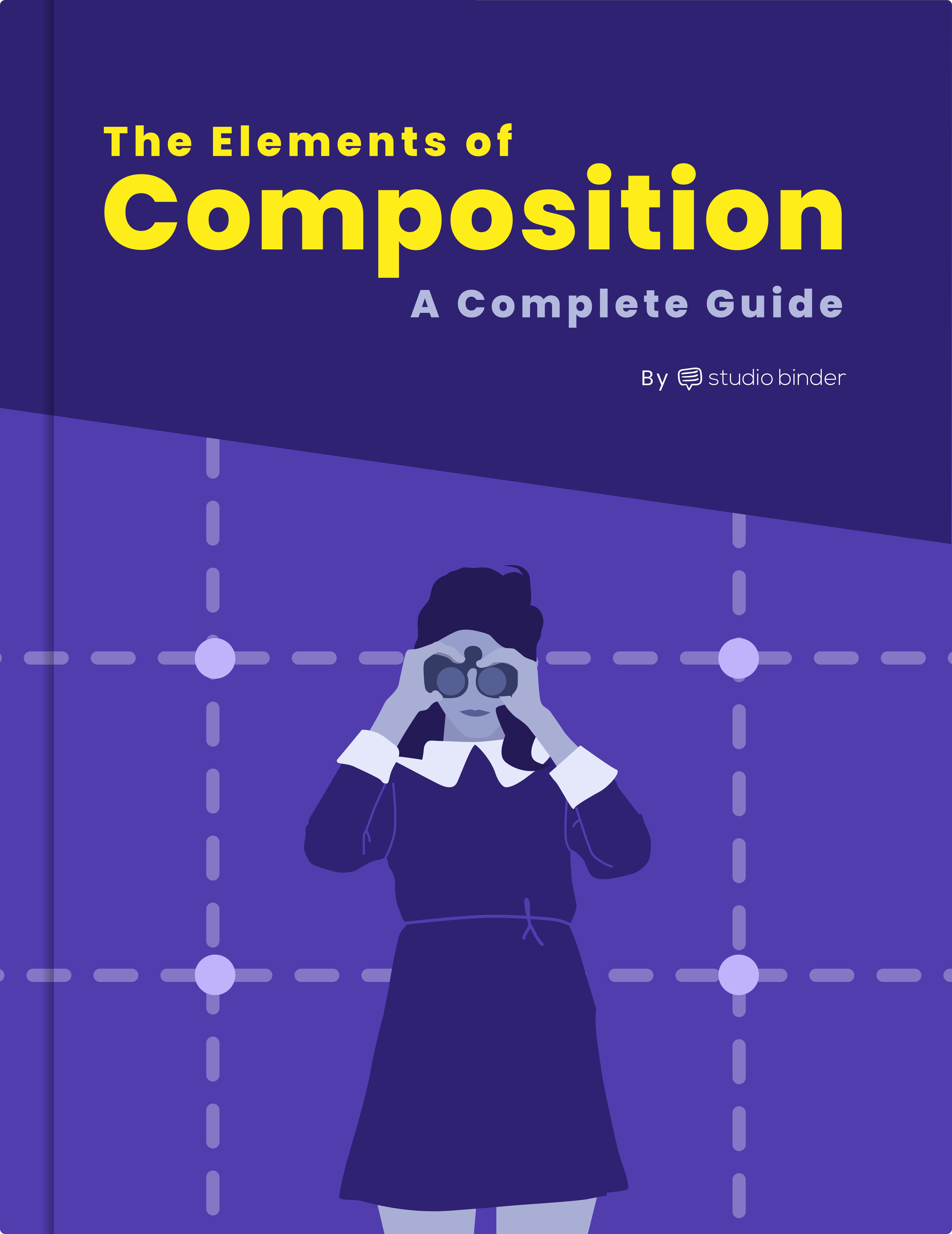When it comes to art, human beings are drawn to both harmonious and antagonistic compositions. While harmony in art can evoke pleasing emotions that viewers are drawn to, art with conflict can create greater intrigue and story. One of the most valuable techniques for creating the latter in art is contrast. What is contrast and what is its place in art?
Contrast can be used in nearly every art form in numerous ways. But it’s important to understand the “Why?” behind its ubiquitous use in art. In this article, we’ll take a look at why artists and consumers of art alike love contrast.
What is Contrast in Art and Composition?
First, let’s define contrast in art
Contrast can be achieved in a variety of ways. Before we dive into those techniques and some examples of contrast in art we must first learn what contrast is as it pertains to art by looking at the contrast art definition.
CONTRAST ART DEFINITION
What is contrast in art?
Contrast in art is the technique of using unlike visual elements in juxtaposition to create meaning and intensify the characteristics of the work. Artists utilize various elements at their disposal to create contrast such as shadows, light, color, size, and composition. Contrast has often been called the golden rule for creating art as it is one of the best tools to engage a viewer and create meaning within a single work.
What is contrast in art created from?
- Complementary colors
- Light and dark
- Contrasting sizes
While contrast is a highly importance aspect of composition, there are many others to consider as well. Before we dive head-first into contrast in art, download our FREE E-book on Elements of Composition in Art, Photography & Film — The Complete Guide.
Free downloadable bonus
FREE Download
The Complete Guide to Composition Elements
When you master composition, you master the ability to tell a story, create a mood or deliver a message in a single image. Download our FREE e-book that covers the various elements of composition and the relevant techniques you can use to arrange, and compose the perfect image.
Why do Artist Create Contrast in Their Work
What is contrast in art used for?
Calling contrast the golden rule of creating art is a bold statement, but many stand by it. Why? Let’s take a look at a few reasons contrast is so ubiquitous throughout art and composition.
Tell a story
First and foremost, contrast is a simple and efficient way to create meaning. When we see two unlike in juxtaposition next to each other, our mind automatically compares and contrasts them.
Consider this work from Banksy and how he subverts the imagery to tell an unexpected and powerful story with contrast.

Banksy • Contrast artwork examples
In this process, we interpret the meaning the artist is trying to communicate. Artist’s use this natural process as an opportunity to tell a story through composition.
Reinforce a theme
In addition to telling a story, contrast can be used to reinforce a story's theme. Because contrast can be used repeatedly throughout compositions with too much redundancy, it can reinforce a theme over the course of several compositions. This is particularly the case in film and video.
In this Spike Jonze-directed Apple advertisement, visual contrast is used to underscore the difference in the character’s day when music enters her life.
Spike Jonze Homepod: Examples of contrast in art • Subscribe on YouTube
Add depth and dimension
Beyond the actual content and meaning of a composition, contrast can do wonders to how a work of art looks. Specifically, within 2-dimensional mediums such as paintings, photography, and cinema it can be difficult to portray 3-dimensional reality.
Contrast adds immense amounts of depth and dimension to a shot. Shapes and spaces become more realistic when artists use contrast to bring out the details.

Saint Jerome Writing by Caravaggio • Examples of contrast in art
There’s no doubt that contrast in art can result in more stunning compositions. But the reason contrast is regarded as the golden rule of creating art isn’t solely because of its visual appeal, but because of its ability to connect more deeply with a viewer. As the golden rule of creating art, it’s important to learn the different ways to incorporate contrast in your work.
Related Posts
What is Contrast in Art Created From?
Use Light and Shadow
One of the most fundamental ways to incorporate contrast into a composition is through light and shadow. Light and dark are one of the most ancient contrasts that the human mind knows.
Trailblazing artists like Rembrandt and Caravaggio introduced the benefits of contrast in their paintings. Their high contrast technique and style later became known as chiaroscuro.
The technique demonstrated how to use both light and shadow within a single composition can create both meaning and visual engagement. This video explains the function and purpose of contrast in chiaroscuro lighting.
What is Chiaroscuro • Subscribe on YouTube
Rembrandt lighting and chiaroscuro continue to make an impact on cinema. Film Noir is known for its use of high contrast lighting. But great filmmakers build on the technique and use light and dark to tell their story, not just frame it.
Spoilers ahead for There Will Be Blood.
In this shot from one of Paul Thomas Anderson’s best films, Daniel Plainview comes to the realization that the man who claimed was his half-brother is not his brother at all. The subtle subtext of this predicament is intensified by the use of light on Daniel and the shadow that falls onto the imposter.

There Will Be Blood • Examples of contrast in art
PT Anderson uses the contrast of light and shadow throughout There Will Be Blood to emphasize differences and conflicts between characters. Check out the other shots in the film that use contrast for this reason in this Nerdwriter1 video essay below.
One Way To Deconstruct There Will Be Blood • Contrast in movies
Much of the lighting styles in cinema draw on contrasting techniques forged in Renaissance paintings. Artists such as Rembrandt and Caravaggio changed how contrast was used in composition. Their high contrast technique which later became known as chiaroscuro used areas of shadow and light to create depth and dimension.
What Does Contrast Mean in Art
Color Contrast
In addition to light and shadow, color is another tool artists have to create contrast in their work. Colors are impacted by each other and play off of each other. This is a simple explanation of the importance of color theory.
Within color theory, complementary colors create contrast when juxtaposed in the same composition. A simple example of this can be warm and cool colors such as orange and blue as you see here from the film Mad Max: Fury Road.

Mad Max: Fury Road • Examples of contrast in art
Color contrast art can be a powerful tool that holds meaning and makes an image much more striking. Complementary colors not only creates more contrast, but has a direct effect of adding visual variety to your composition, making it much more intriguing.
If you’re unfamiliar with color theory and the various effects different color combinations can have, check out our video breakdown of color theory in filmmaking below.
Color Theory in Film • Subscribe on YouTube
Once you have a fundamental understanding of color theory, you’ll become much more intentional with how you use color in your work. Specifically when trying to create color contrast art, the ideas behind color theory are valuable guidelines to keep in mind.
Related Posts
What is Contrast in Art and Composition?
Tonal contrast
If you are creating in black and white, you might be thinking, “Well color contrast doesn’t help me.” That’s where tonal contrast comes into play.
Tonal contrast is similar to using light and shadow for contrast. The difference is that rather than focusing on exposure, tonal contrast is geared specifically toward the tones of black, white, and everything in between in a composition.
There’s a reason black and white art and photography have held a place among fine art for so long. The contrast of black and white is simple, yet sophisticated. When it comes to tonal contrast, there are few artists you can learn more from than the legendary photographer Ansel Adams.

The Tetons and the Snake River • Contrast artwork examples
If you plan to use tonal contrast in your black and white work to create more dimension, be sure to learn about Ansel Adams’ zone system. Adams developed the zone system as a means of creating more range and detail within a black and white image despite the lack of color.
The zone system ensures the use of various tones that fall between just black and white. For a full tutorial on how to use the zone system in photography, check out the video below.
The Zone System in Photography • What does contrast do
Exposure, color, and tones are all visual characteristics that can create more contrast in a composition.
However, when it is also important to consider how to use contrast in the content of your composition through the subjects you choose.
Principle of Contrast in Art
Contrasting subjects
Sometimes, contrast is not meant to be subtle, it’s meant to make a statement. One of the more head on ways to use contrast in your work is to use contrasting subjects. What these subjects may be and how they contrast depends on what point, concept, or story you are trying to communicate.
Using contrasting subjects is especially effective in telling a story when it comes to still photography. Still photography does not have the luxury of communicating information through movement or sound like cinema.
But a lot of meaning can be drawn from the subjects you choose and contrast between them.
Whether you use contrasting subjects, colors, or exposure in your composition it’s important to be intentional with what you are using contrast for. Ask yourself a few questions, “What story am I trying to tell? What visual style do I want to achieve? What type of contrast will be available in the composition I am creating?”
The tips and techniques we’ve laid out for you in this article are of course guidelines that we hope inform you on the function of contrast in art. As is the case with any other compositional technique, contrast is simply a paintbrush that you can wield how you choose. Getting creative with contrast is where your artistry and voice comes into play. And that’s the fun part.
Up Next
What is Juxtaposition?
Creating contrast in any art form relies heavily on juxtaposition. Whether using complementary colors against each other, contrasting subjects, or light and shadow, juxtaposition is key to incorporating contrast in your work. Learn more about juxtaposition and how it can be used in our next article.
Up Next: Juxtaposition Explained →
Showcase your vision with elegant shot lists and storyboards.
Create robust and customizable shot lists. Upload images to make storyboards and slideshows.

